Australia is a vast country. I have lived there for over 48 years and I have visited many parts of the continent. However, one part has eluded me until now. So when my partner and I were discussing our next lets-go-there-before-it’s-too-late destination, we hit on Kangaroo Island off the coast of South Australia. The name sounded promising, so we decided to see if it’s accurate.
To travel to KI, as the locals call it, we had to get to Adelaide from our home in Terrigal, New South Wales. It’s a long, tedious drive by road, and flying was the preferred option.
Kingscote
Thus, three weeks ago, we were on a flight from Sydney to Adelaide. After an enjoyable, but stiflingly hot week in Adelaide, we caught the early morning Qantas flight to Kingscote Airport on KI.
There must be many contenders for the title of world’s shortest scheduled flight, and Adelaide to Kingscote will be high on the list. It’s served by a Dash 8 turboprop aircraft, which takes 25 minutes. The flight attendants serve ‘refreshment’— a small bottle of mineral water and a shortbread finger — on the run.
The other way to travel to KI is by ferry from Cape Jervis, 75km south of Adelaide, for the 20km crossing.
Via Roo
The island is 150km long and, while the few main roads are sealed, the majority are unsealed.
The first impression when driving away from the airport is that the Romans must have visited KI with their road-planning skills. There are long stretches of dead straight road. The speed limits are high and there is almost no traffic.
The big issue for drivers is kangaroo danger. You are warned not to travel between dusk and early morning, yet I experienced a close encounter with a roo at 9 am. Skippy can suddenly jump out of the bush at any time, it seems. Sadly, there is a lot of roadkill.
Fuel problems
The human population of KI is 4,250, with most inhabitants concentrated in the towns of Kingscote and Penneshaw, close to the eastern end of the island.
There are few other settlements and fuel is available only in the two towns, which is a big issue given the size of the island.
When I went into the airport car park, I was astonished to see the number of EV charging stations. I later realised that electric cars make good sense on KI. If you live at or travel to the far end of the island, your nearest fuel pump could be 150km away.
Here the statistics get interesting. The few islanders co-exist with up to a million kangaroos, 80,000 Koalas and over 700,000 sheep.
The main industries on KI are sheep rearing and tourism. But there are now several wineries producing drinkable beverages.
The old dilemma
We went to KI to see and photograph the scenery and, of course, the animals. The dilemma for me was which camera to take.
Nearly three years ago, I purchased a Panasonic S5 with the idea of using it predominantly with a long lens for photographing motor sport and surfing. I ordered a Lumix Pro 70-200mm f2.8 lens online, but that turned out a big mistake. The monster weighs 1.57kg!
I’ve barely used it because of the weight. To make matters worse, I did not bond with the S5 itself. It had the Japanese complicated-and-fiddly’ virus, which I had previously experienced when I briefly flirted with a Sony A7.
I abandoned the S5 — at least, I put it in a drawer — and purchased a new Leica SL2, then on run out after the introduction of the SL3.
This is a beautiful camera and a joy to use, but it is undoubtedly heavy. Despite this, I became enchanted with it and I added a few more L-mount lenses from Leica, Lumix and Sigma to go make the best use of the camera.
The obvious choice for Kangaroo Island with the animals and scenery to photograph was the SL2, and say three lenses — including that Sumo wrestler of a 70-200mm Lumix. But the problem is the weight, as always.
For me, it was not feasible to travel by air with that weight and size of gear, let alone carry it around on the island in the heat. Leica ought to give serious consideration to keeping down the weight of future products.
How can an SL2’s L-mount 50mm f/2 APO-Summicron-SL lens alone weigh 740g whereas the full-frame Q3 43 camera, with its superb 43mm f/2 APO-Summicron ASPH lens, weighs only 772g?
Enter the Leica Q3 43
Cutting to the chase, the SL2 and its beautiful fat friends were out of the frame. As it happened, fortune again smiled on me when I acquired a Leica Q3 43 a few weeks before the KI trip. You cannot have too many Leicas!
Having said that, I did struggle with the Q3 43 on the journey. After using a Q, and then a Q2, for taking thousands of photos, I found adjusting to the angle of view of the 43mm lens difficult. More than a few times I wished I had had the 28mm Q2 with me.

The Q3 43 with the 60MP sensor and its sensational lens helped me with the wildlife shots. But I realised I could have done with the Sumo 70-200mm lens — and its 2x converter — for better shots of the seals at Seal Bay.
However, I’ve come to realise that even though I might own the right gear, there is one inescapable conclusion. There is not the remotest chance that nowadays I can travel to a location and come back with possible entries for Wildlife Photographer of the Year or Landscape Photographer of the Year.
It’s best always to travel light, lower photographic expectations and enjoy the ride!
Hot, hot
To emphasise this point, in Adelaide and on Kangaroo Island we experienced hot weather. In two weeks we had just one day below 34ºC and there were two days when it was over 40ºC.
Occasionally, the Q3 was hot to the touch. And to make matters worse, the sun was strong and harsh, resulting in extreme contrast — the antithesis of favourable photography conditions.
As far as photography is concerned, I decided to opt for what I’ll call memento shots — a fancy name for holiday snaps. Letting the Q3 43 show its mettle would have to wait for another day, although I did manage to take a series of photos of sheep shearing, which I will cover in a later article.
The selection
This article includes a selection of the animal photos. First, kangaroos. With an estimated million on the island, it’s not difficult to find a roo to photograph.
We stayed in a lodge close to the Cape Willoughby Lighthouse on the eastern end of the island. Roos were around the lodge all day and as the island is currently desperately dry, they were coming to drink out of the bowls of water put out for them.
In the late afternoon, roos came to the bushes outside our room to feed, and we watched them tucking in as we ate our dinner.
Thirsty roos
One afternoon, a Rosenberg goanna with its distinctive long tail came out. A nearby roo kept a watchful eye on it, but roos are herbivores and the goanna was safe.
Slothful koalas
Despite the large population of koalas on the island, It’s difficult to spot them. Incidentally, many koalas sadly died in the 2019 bushfires which swept the island. Koalas don’t move fast!
Many don’t move for hours. They eat gumtree leaves — but leaves from particular species of gumtree — and the KI koalas are eating those leaves faster than the trees can grow them.
Now, gumtree leaves are not nutritious (I am told) and every koala has to consume plenty of leaves every day and then not rush around because they don’t have reserves of energy. All this explains why koalas do sod all during the day!
Because they are normally static and well camouflaged in the bush, koalas are difficult to spot, but we did well in this test. Nice and close, thanks to the Q3 43.
Seal colony
The appropriately named Seal Bay on the south coast of the island is the home to a huge seal colony. The animals live in the sea, on the beach and in the surrounding dunes.
Visitors used to wander the beach freely and the surrounding dunes, but that was not good for the wellbeing of the seals. Nor for the pups, which have to wait alone every six days for their mothers to return with food after three straight days at sea.
Visitors now have to be with a National Park Ranger/Guide, stay in a tight group, and can access only a small part of the beach by the boardwalk. Life has improved for the seals and their pups, but photographers now need long lenses.
Kangaroo Island: Scenic roundup
Finally, a few scenic shots. Away from the coast, the island is mainly flat and consists of National Park, bush or farmland. But the coastline and the beaches are spectacular. Here’s a sample.
| Explore John Shingleton’s articles on Macfilos | Discussing the Leica Q3 43 |
| Long-term review of the Leica Q3 43 | Read more about Australia |
Make a donation to help with our running costs
Did you know that Macfilos is run by five photography enthusiasts based in the UK, USA and Europe? We cover all the substantial costs of running the site, and we do not carry advertising because it spoils readers’ enjoyment. Every amount, however small, will be appreciated, and we will write to acknowledge your generosity.



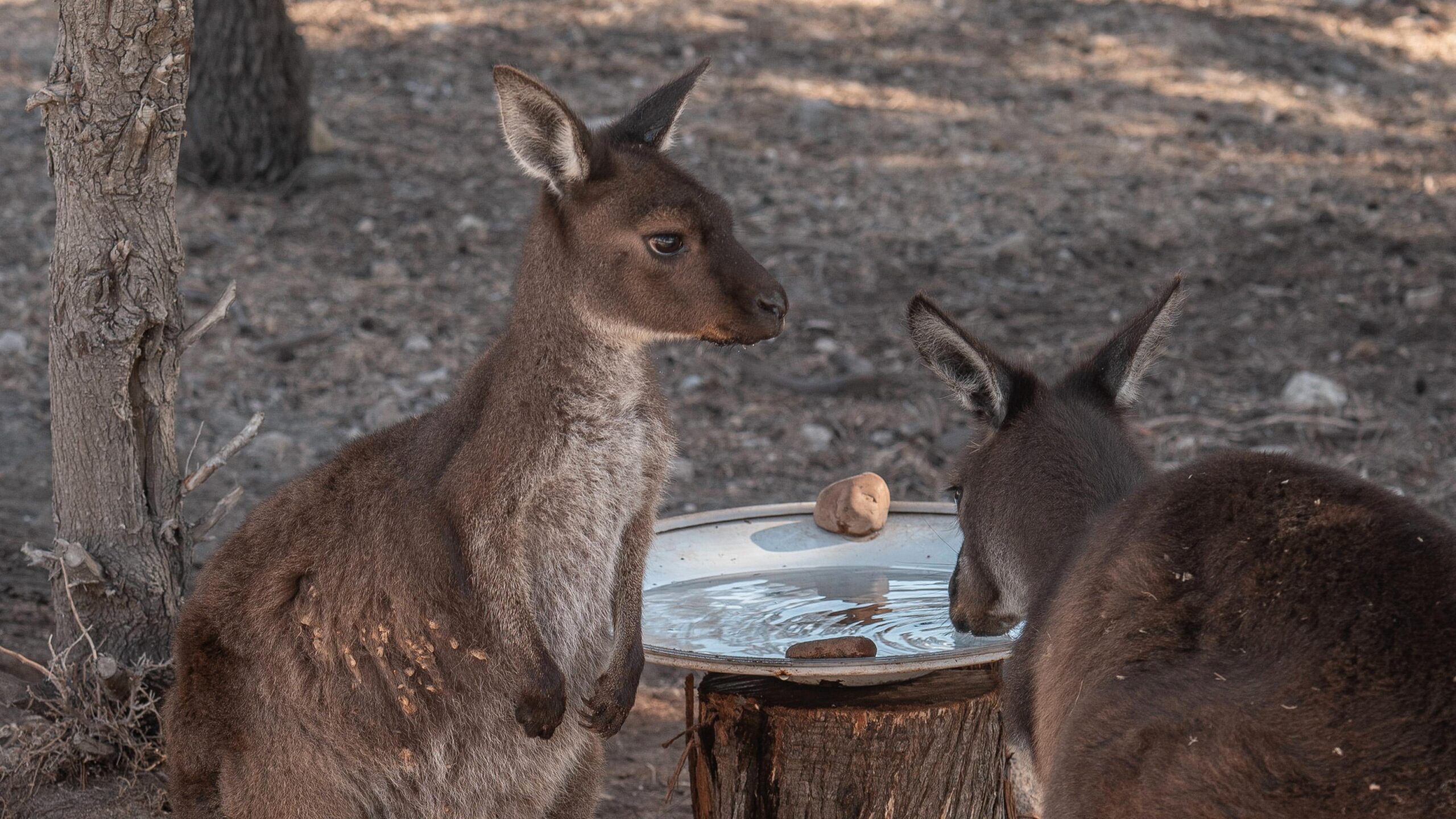

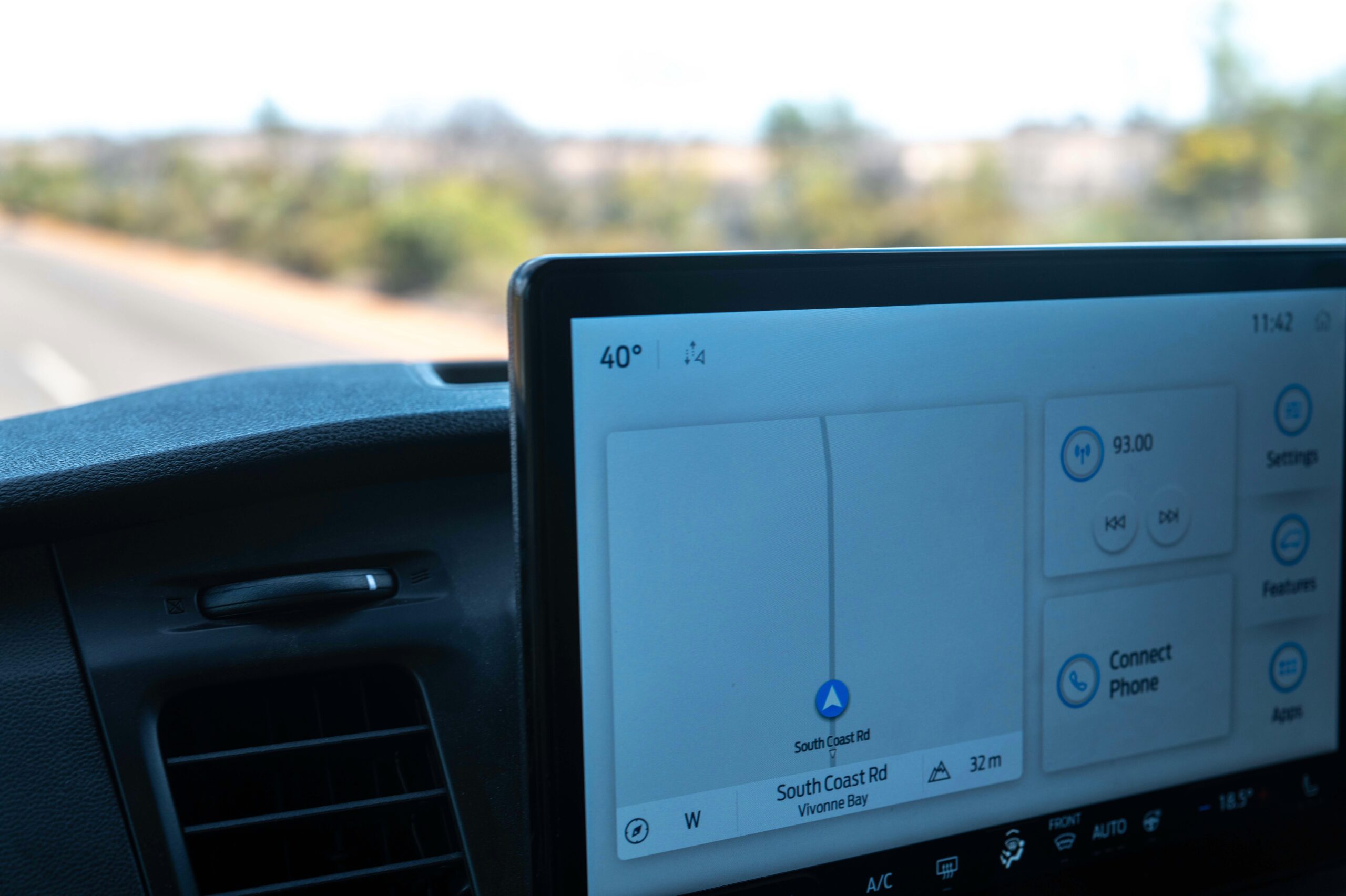
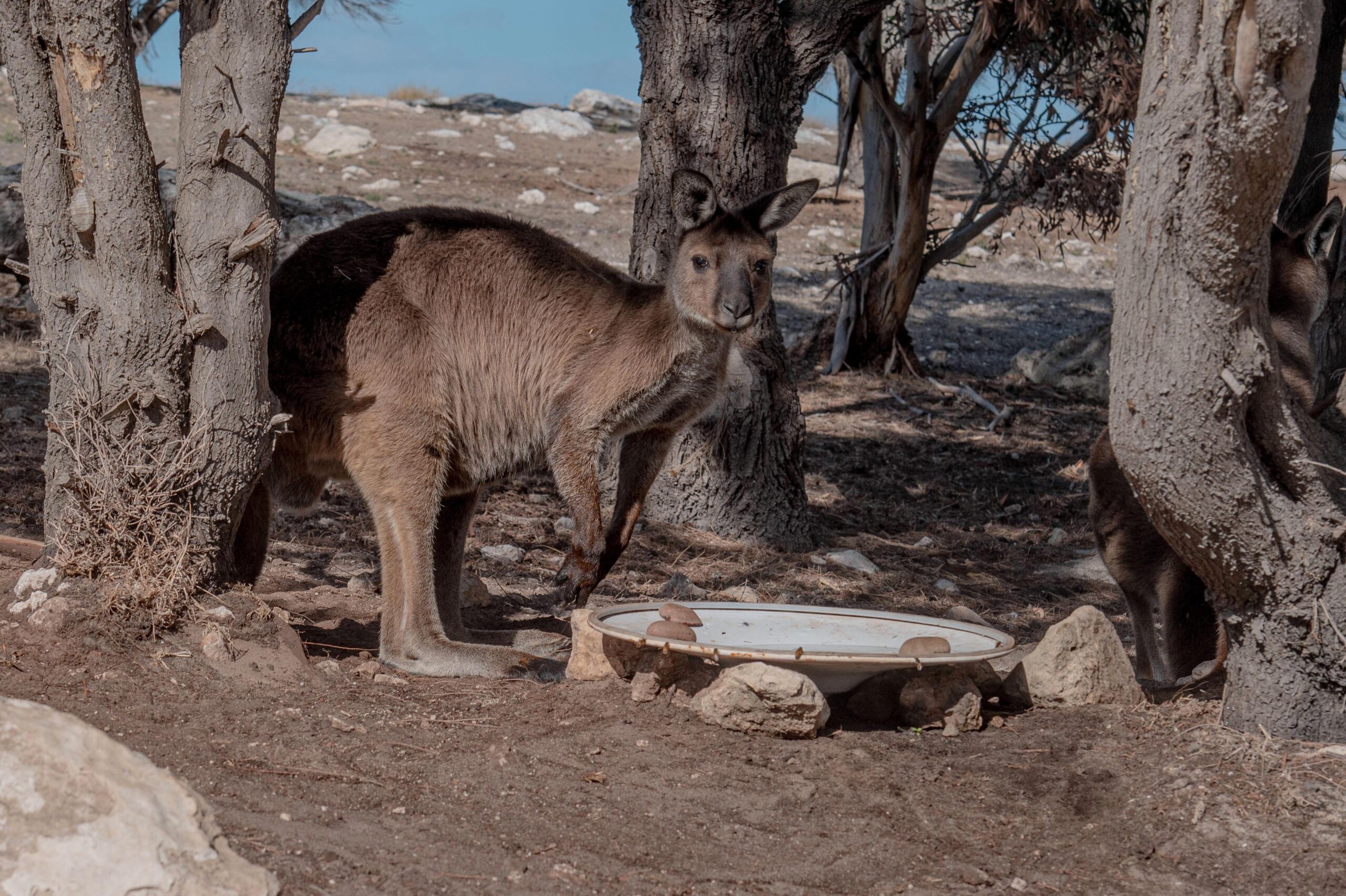
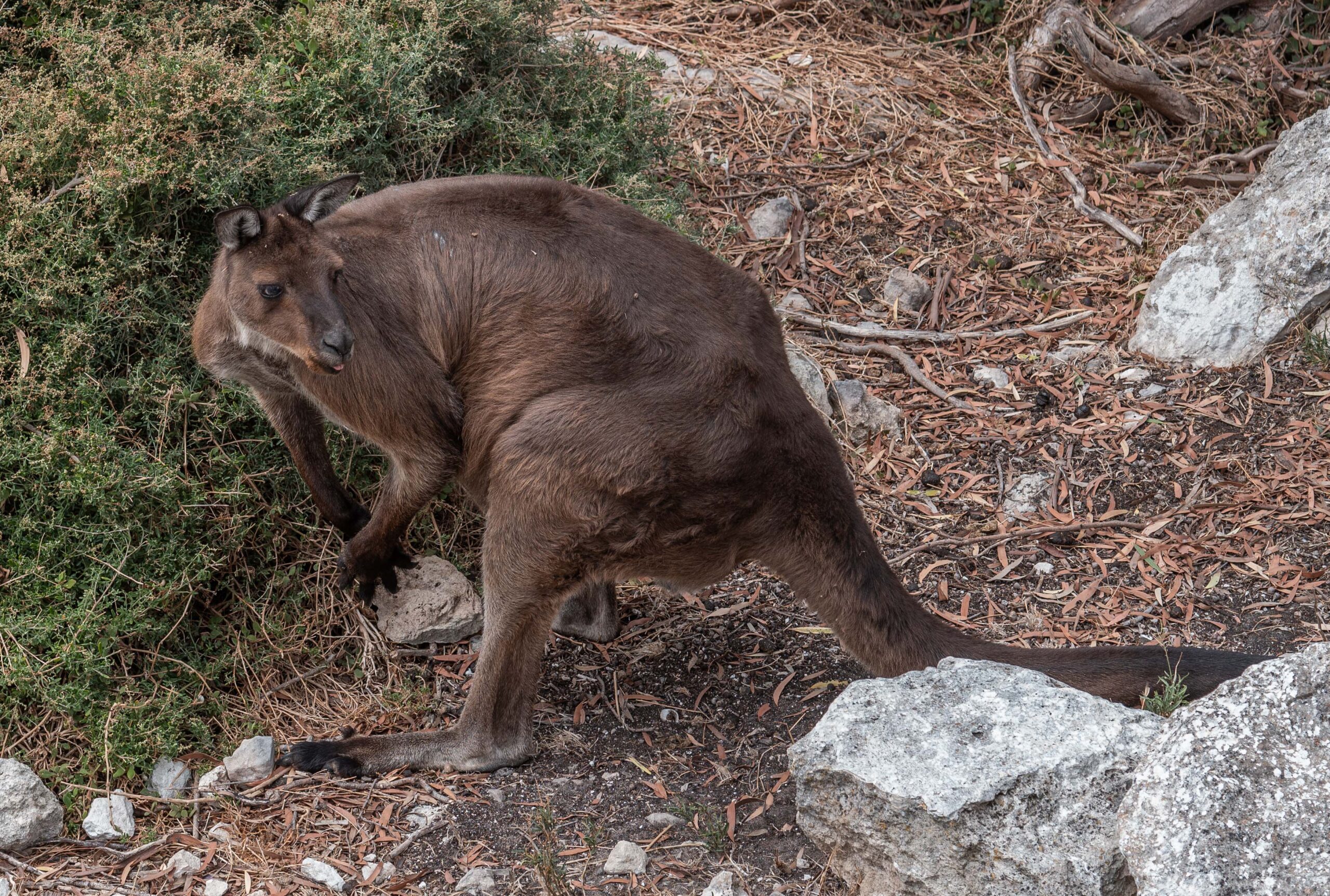
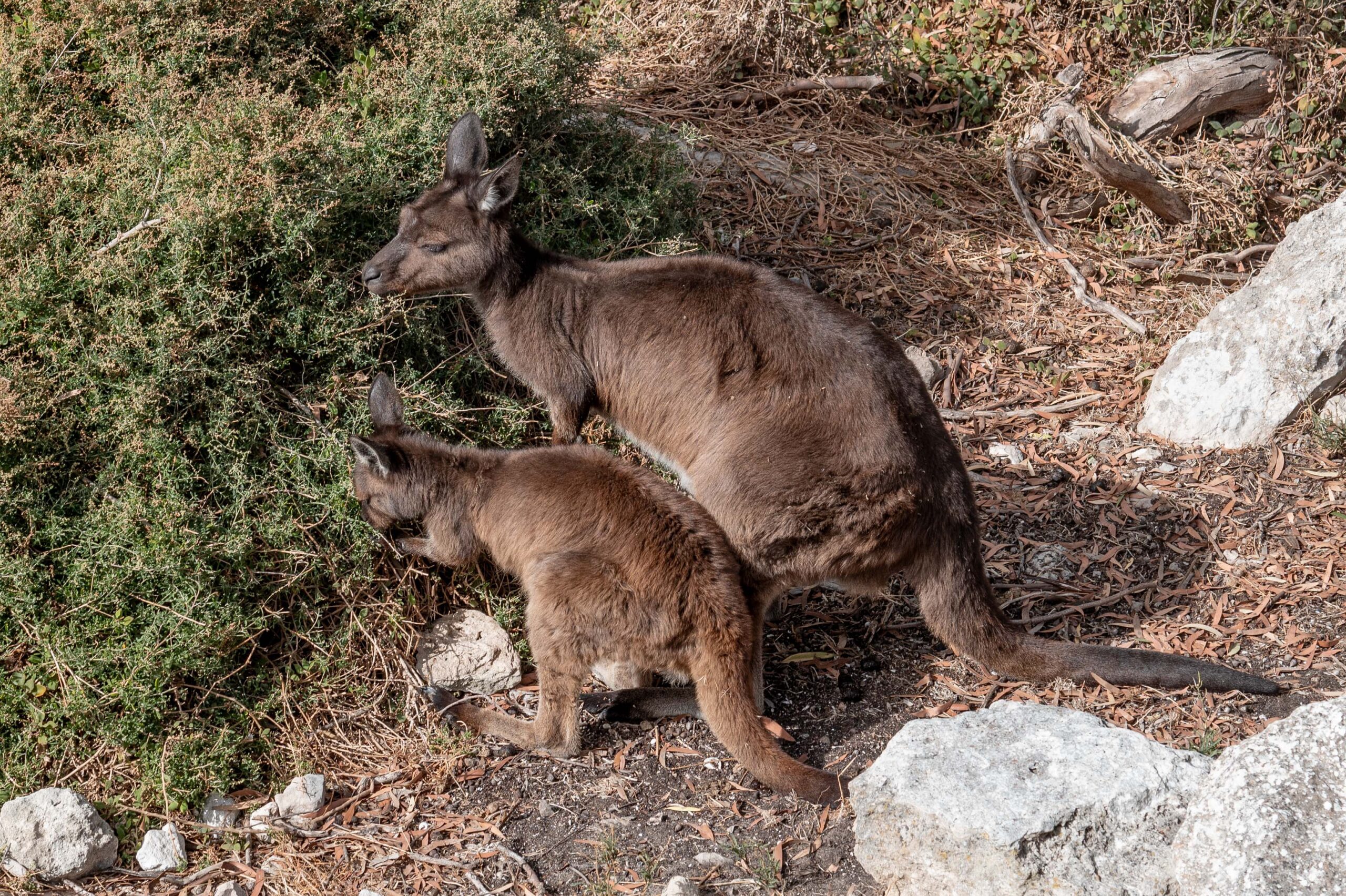








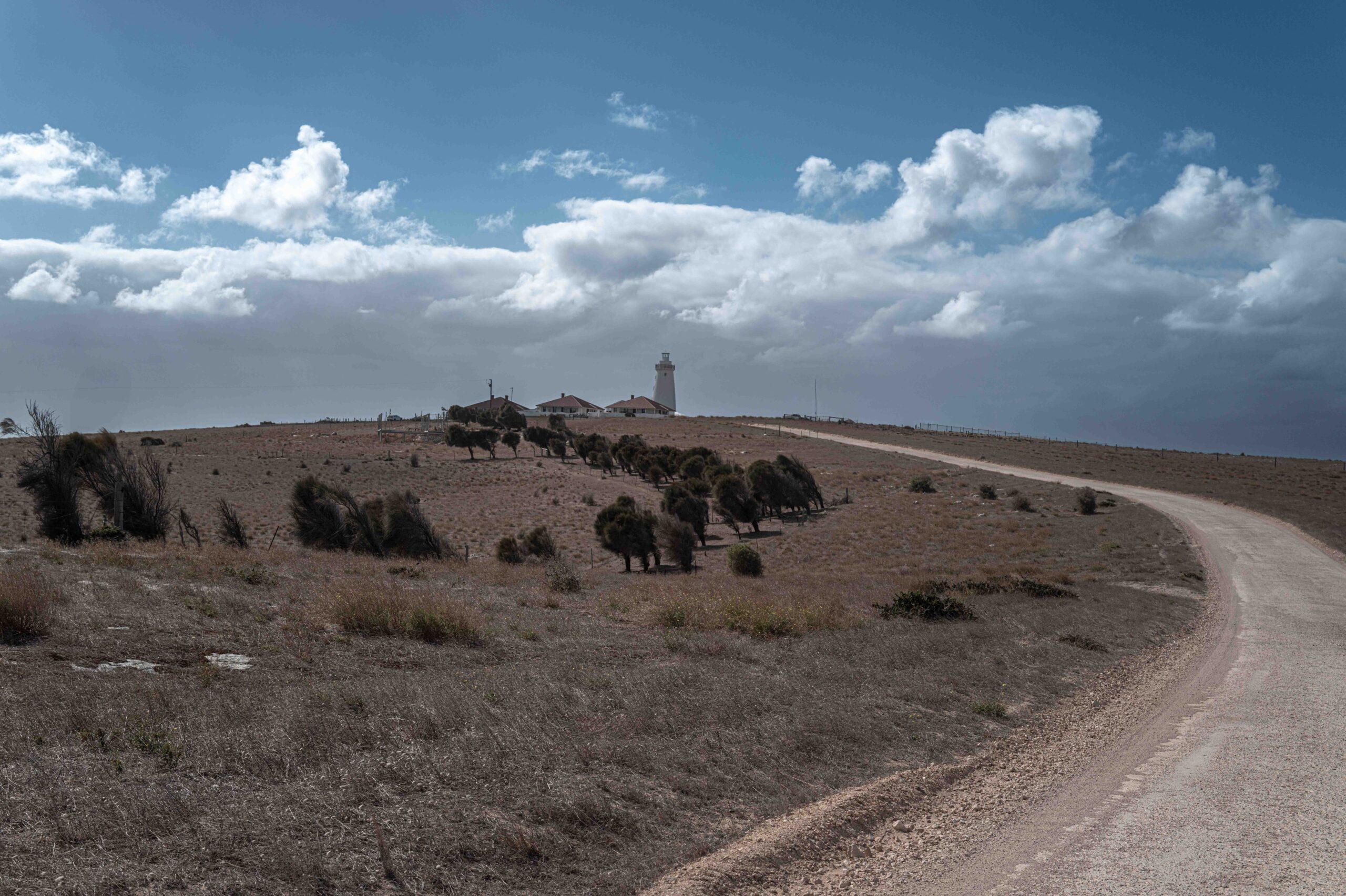
I opted for the 70-200mm f4 Panasonic lens as I didn’t need the low light capabilities of the f2.8. It’s a great lens and a lot lighter. When we lived in the Pilbara the wildlife officers got upset with people putting out water for the wallabies as it encourages them to keep breeding during drought periods when their bodies would otherwise switch off reproduction. The population can then grow to unsustainable levels and the young become particularly vulnerable.
I had the good fortune to spend three months in Oz in the 80’s. I do remember that long, dusty drive from Canberra to Adelaide, including almost running out of gas in the middle.
There was an animal park near Adelaide. The lazy brute males wouldn’t even bother getting up for ranger-supplied goodies. How much better seeing the animals in a natural setting. I particularly liked your photos of roo with joey, and one roo looking backwards, rather furtively 🙂 Nice captures, and not only because of the Q3!
BTW: I never realized why the koala is so somnolent; thanks for the explanation!
Hi John,
Thank you for this retrospective of your trip to KI. I would love to visit.
All the best.
Mark Catto